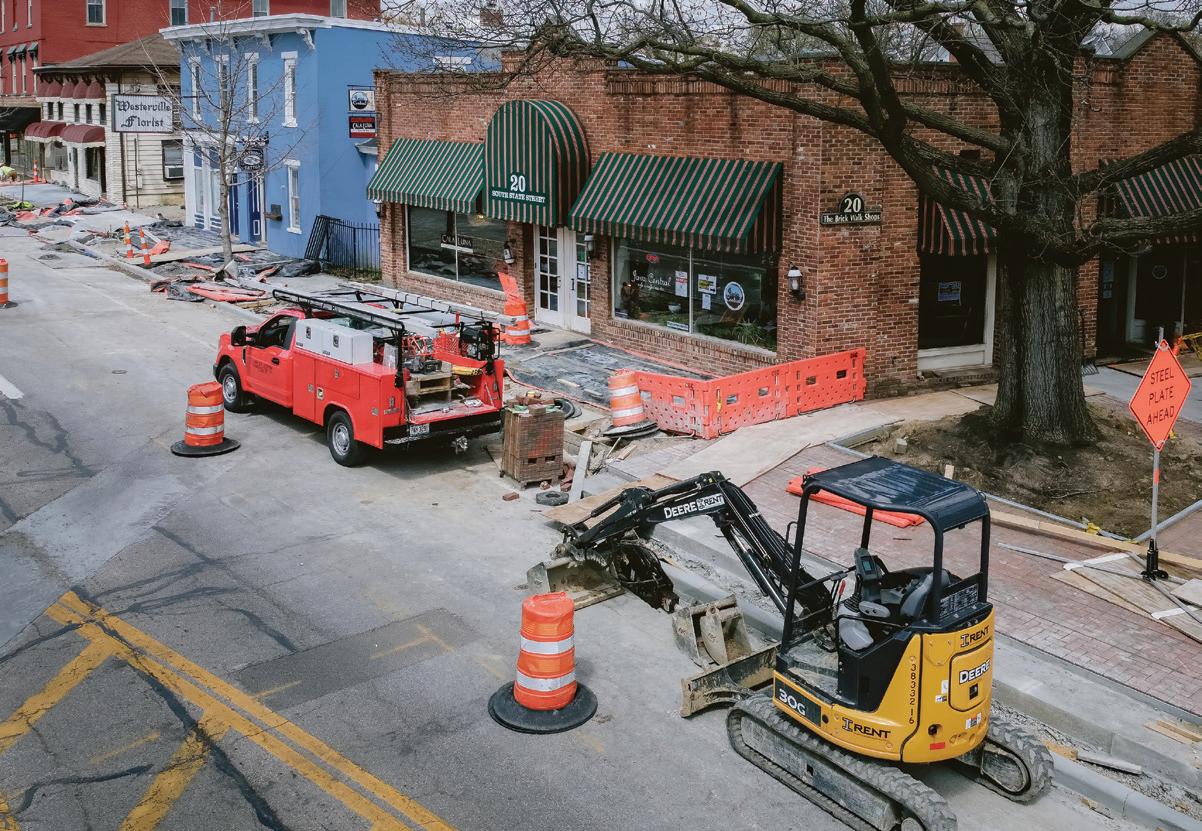
4 minute read
Spring Storm Preparedness
With all that spring 2020 has brought by way of an international pandemic, severe weather preparedness may be the furthest thing from your mind. However, the City is joining the Department of Homeland Security (DHS) in encouraging residents to take simple steps to ensure they are prepared for severe weather this spring and summer.
Have a “Go-Bag”/Kit Ready:
The most prepared people may already have a bag in their vehicles filled with essential items in case of an emergency. However, it’s important to consider that, in the case of a severe weather outbreak, you may not be able to use or even access your car. Consider keeping a bag/box in your home (preferably in your best shelter location) filled with:
WATER: DHS experts recommend keeping a three-day supply of one gallon of water per day per person in the household. This water could be needed for drinking and sanitation purposes. Don’t forget your pets! FOOD: Non-perishable foods lasting each member of the household (including animals) for at least three days. MEDICATIONS: Over-the-counter and prescription BATTERIES: You’ll want a variety of batteries to power your important electronics.
FLASHLIGHTS CELL PHONE CHARGERS FIRST AID KIT CASH
Find a detailed list of what to keep in your go-bag at www.ready.gov/kit.
Key Terms to Know The National Weather Service (NWS) experts issue weather watches, warnings and advisories when they anticipate dangerous weather conditions.
WATCH
Experts see a potential or conditions exist for a dangerous weather event.
WARNING
A dangerous weather event is imminent and residents should take immediate action must be taken to protect life and property.
DNESS
WHAT YOU NEED TO KNOW ABOUT...
LIGHTNING:
• It’s unpredictable, increasing risk to individuals and property. • It often strikes outside of heavy rain and may • occur as far as 10 miles away from any rainfall. • Lightning strike victims carry no electrical charge and should be attended immediately.
THUNDERSTORMS: • They may occur individually, in clusters or in lines.
Some of the most severe occur when a single thunderstorm affects one location for an extended time. • They typically produce heavy rain for a brief period, anywhere from 30 minutes to an hour. • Warm, humid conditions are highly favorable for thunderstorm development. • About 10% of thunderstorms are classified as severe, with possibilities of hail and winds of 58 mph or higher or produces a tornado.
WIND:
A High Wind Watch/Warning means a potential of high wind speeds of 40 mph and/or gusts greater than or equal to 58 mph developing that may pose a hazard or is life-threatening. A Wind Advisory a potential of wind speeds of 31 and 39 mph for an hour or more, or any instantaneous wind gust between 46 mph and 57 mph is expected.
TORNADOES:
• Tornadoes may strike quickly, with little or no warning. • They may appear nearly transparent until dust and debris are picked up or a cloud forms in the funnel. • The average forward speed of a tornado is 30 mph but may vary from stationary to 70 mph. • Peak tornado season in the northern/midwest states is late spring through early summer. • Tornadoes may occur in any season and at any time of day.
FLOODING:
• Flooding is caused by spring thawing (snow and • frozen grounds melting in the spring), heavy rains, snowmelt runoffs, flash floods, and mudflows. • Flash floods can bring walls of water from 10 to 20 feet high. • A car can be taken away in as little as two feet of water so do not drive into floodwaters. • Particularly at risk are communities located in lowlying areas, near water, or downstream from a dam. • To stay safe during a flood, go to the highest ground or floor possible.
DRIVING IN FOG:
• Make your vehicle visible to others both ahead of you and behind you by using your low-beam headlights since this means your tail lights will also be on. Use fog lights if you have them. • Never use your high-beam lights. Using high beam lights causes glare, making it more difficult for you to see what’s ahead of you on the road. • To ensure you are staying in the proper lane, follow the lines on the road with your eyes. • In extremely dense fog where visibility is near zero, the best course of action is to first turn on your hazard lights, then simply pull into a safe location such as a parking lot of local business and stop. If there is no parking lot or driveway to pull into, pull your vehicle off to the side of the road as far as possible. Once you come to a stop, turn off all lights except your hazard flashing lights, set the emergency brake, and take your foot off of the brake pedal to be sure the tail lights are not illuminated so that other drivers don’t mistakenly run into you.
Find more weather preparedness and safety tips at










